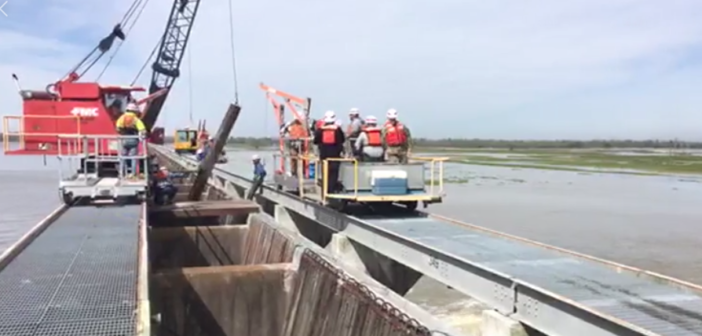The Corps of Engineers made it official last week: after 292 days, water levels along the Mississippi River have dropped below 11' at the Carrollton Gauge in New Orleans, prompting the agency to end its flood fight efforts.
Included in the flood fight is the restriction of certain construction activities within 1,500' of the Mississippi River levees. Now that the river is below 11' at the Carrollton Gauge these restriction are lifted. Permit holders and residents are advised to contact their local levee districts for detailed information regarding their projects.
The historic and unprecedented high-water event began almost 10 months ago and surpassed the 1973 high water event, 225 days, as the longest in the New Orleans District’s history. This year also marked the first time the Bonnet Carre Spillway was put in operation in back-to-back years, twice in one year, as well as the longest single opening at 79 days and a combined 123 days open this year.
Throughout this high-water challenge, the Corps of Engineers worked closely with federal, state, and local partners to coordinate efforts and conduct inspections of the entire river levee system to ensure it would perform as designed and safely pass the high water.
The Corps will continue to work with the state and local levee boards during post-flood inspections while beginning work to reset and restore the levee system on the Mississippi and Atchafalaya rivers.
A tug captain who requested anonymity said the lower water means it takes longer to stop. “Going into a five- or six-knot current, you can almost stop on a dime.”





